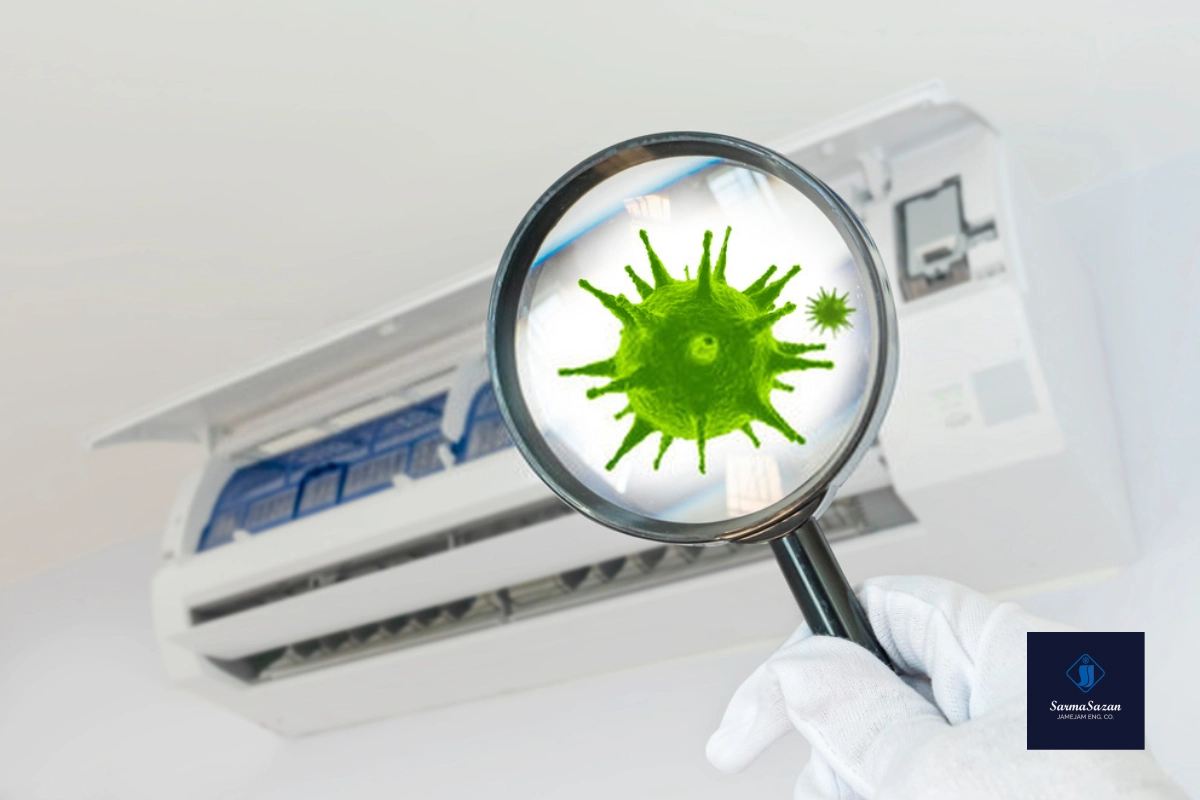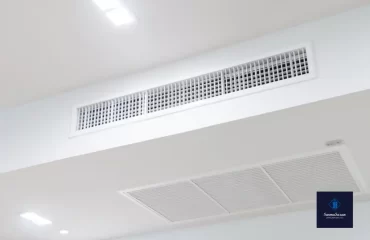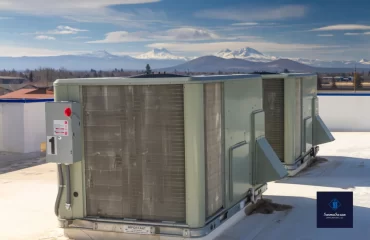The virus and its circulation in the air conditioning system
Central air conditioning systems keep air circulating throughout an building. At the same time, some systems do not allow free air to enter and only clean the air consumed in the environment. Such a system cannot be relied upon in the face of certain diseases and epidemics. In this case, the air of one room is drawn to the air of other rooms as well. Therefore, to prevent this, either the virus or other pathogenic microorganisms should not be allowed into the system or it should be disabled and allowed to enter the ventilation system in its inactive form. By doing so, the virus is in the air in any case and enters the air conditioning system, but is unable to function. As in various modes of fighting the virus, the outer membrane of the virus is destroyed or its structure disintegrates so that the virus can not reproduce and function.
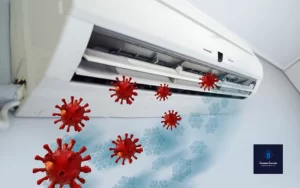
How does the ventilation system deal with the virus?
Air conditioners alone are not able to control the air and eliminate the risk of transmitting viruses or other microorganisms. Therefore, in order to improve the performance of the air conditioning system, it is necessary to use side factors that are done in different ways in different situations.
But in the first stage; In order to prevent the virus from penetrating the ventilation system, it is necessary to consider what kind of ventilation system it is. If the air conditioning system is of the type that enters the same air consumed and re-enters the environment after performing the ventilation and air conditioning processes without purifying the neck, in such a system can not be expected that the virus has not entered the system and Do not transfer.
To cope with such a problem, it is necessary to combine the air ventilated by the system with fresh air. Therefore, it is better to open windows or even windows to let in fresh air.
For better ventilation, it is necessary to open two opposite windows to create an air flow and prevent viruses from escaping as much as possible. If there are no two windows, a fan can be used to create airflow.
In addition, to ensure that the virus does not accumulate in the environment, it must be ensured that the ventilation system is operating at its highest capacity and in accordance with the environment.
But in general, apart from improving the performance of the system for the accumulation of virus in the environment, it is necessary to know whether the systems that bring fresh air into the room air and those that re-use the guest air, both with The entry of viruses are encountered. Even with the windows open and the airflow still in place, the virus will still be there. The next way to prevent the virus from infiltrating the air conditioning system is to basically kill the virus on the spot. The use of UV or ultraviolet rays kills viruses on the spot. But naturally this will not work in the long run. With the arrival of each client, this disinfection disappears and the probability of the virus being present again increases.
Ultraviolet disinfection of room or room air is such that a certain amount of ultraviolet light is emitted into the air. To facilitate work and increase efficiency, air is circulated by means of a fan or any other device that generates current to expose more air molecules to ultraviolet light and inactivate viruses. An ultraviolet lamp will do the same when it comes in contact with air.
The third way to eliminate the function of the virus in the air and prevent it from entering the system is to use portable air purifiers. These devices are made at home and are suitable for environments where ventilation and air purification are not possible. At the same time, according to the amount of traffic in the environment, the dimensions of the space and its use, different devices can be selected.
Filters should be used to prevent viruses from entering the system. Depending on the size of the virus, which can be as small as a few nanometers in diameter, a variety of filters can be used. But the fact is that with this diameter, there are only a few filters that can trap the virus and prevent it from entering the air conditioners.
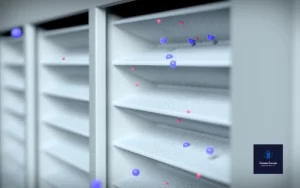
What are the filters used to prevent the virus from penetrating the ventilation system?
A group of these filters is called HEPA or HEPA and is a system requirement in health care centers. Because if the virus enters the system building in these centers, it not only interrupts the treatment process, but also speeds up the spread. HEPA filter is composed of fibrous fibers including fiberglass, straw, mat and cotton fibers, so the filter includes a variety of textures. The performance of the HEPA filter in preventing the virus from entering the ventilation system is defined from 85% to 99.99%.
The next filter is the ultraviolet or UV filter. This filter does not remove viruses from the air, but rather destroys the function of the virus by destroying the structure. So again the virus will enter the ventilation system, but it is not active and alive and is not considered dangerous in practice.
Pay attention to the safety of the ventilation system and review its performance
There are also cases that go back to the building of the ventilation system itself to prevent the virus from entering it.
For example, the CDC or the Centers for Disease Control and Prevention announced to prevent viruses or other microorganisms in the system:
- It is necessary that the entrance valve is installed exactly flat and in place and does not leave any gaps between the entrance channel and the ceiling or wall.
- If the system thermostat is on automatic mode and the system is turned on and off depending on the needs of the environment and the diagnosis itself, when meeting and increasing the number of attendees, the thermostat must be turned on.
- The filter should be replaced every three months.

 English
English  فارسی
فارسی 